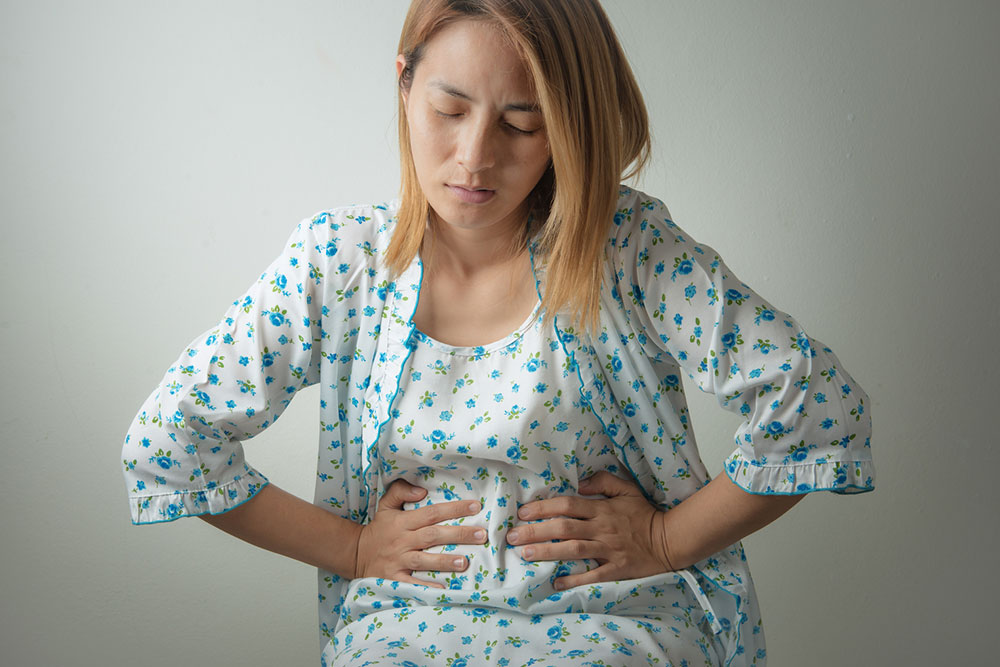Causes and Treatments for Lower Abdominal Pain
It’s a typical experience that we all face, especially for women, when you have a stomach pain and don’t feel like moving much. Often, the pain occurs, particularly in the lower abdominal area. In most cases, such a pain isn’t a serious one; however, it can sometimes be a symptom of a serious health issue.
The abdomen in a body is the space between the chest and the pelvis. The abdominal space comprises of the stomach, small intestine, liver, spleen, urinary bladder, pancreas, gallbladder, and adrenal glands.

Find the symptoms
The abdominal pain can often be confused with pain in other organs. You can consciously observe the symptoms and learn to differentiate between the pain and their symptoms. The pain in lower abdomen includes pain in the left lower abdomen and right lower abdomen, and in the middle as well. The left side and right side have different organs, and the pain emerging from them has different causes and symptoms. Here are a few symptoms to watch out for:
- Fever is the primary symptom of the abdominal pain. The pain causes a person to have chills. Although fever occurs in several other conditions as well, it acts as one of the primary symptoms in the case of a lower abdominal pain.
- Cramps, pain, discomfort, and tenderness in the left and right sides of the abdomen. The pain increases if you make movements.
- A bloated feeling.
- The symptoms like nausea and vomiting are usual in people having pain in the lower abdominal area especially if the pain is due to food allergy or food poisoning. Do not take your constant vomiting as a normal one, it might lead to more complications.
Sometimes diarrhea and constipation might occur. - The person may lose his/her appetite.
- Sometimes the pain becomes so worse that it can awaken one from the sleep and cause an excess amount of sweating and vomiting. In such a case, the person must be immediately rushed to the hospital without delay, as it can be a sign of a stomach or other disorder.
Know the causes
A lower abdominal pain might have several causes that may or may not require medication. Some of these might seem very regular, but you need to stay cautious. A few common causes of abdominal pain are:
- Indigestion
- Food allergies
- Food poisoning
- Stomach infection
- Constipation
- Menstrual cramps
A few other conditions like Irritable Bowel Syndrome (IBS), ulcers or pelvic inflammatory diseases, and Crohn’s disease (Chronic Inflammatory Bowel Disease (IBD)) may also cause pain in lower abdomen. Abdominal pain can occur in persons who are intolerant to lactose.
Also, a few other conditions causing the pain that would need a medical treatment are listed here:
- Hernia
- Kidney stones
- Gallstones
- Gastroesophageal reflux disease (GERD)
- Appendicitis
- Endometriosis
- Ovarian cysts in women
When do you need to see the doctor?
When the pain in the lower abdomen is due to indigestion, constipation or food allergy, it is likely to go away with a few hours of rest and restricted diet. If the pain is due to unknown reasons and is unbearable, and doesn’t go away even after a few hours, you must visit your doctor without further delay. Also, along with pain lookout for symptoms such as:
- Fever
- Diarrhea, for more than two days
- Vomiting and signs of dehydration
- Pain while urinating
- Bloody or black bowel movements
- Your belly feels tender to touch
- Swelling in your belly
- Skin turns yellow
- Signs of pregnancy
Diagnosis and treatment
Your doctor may advise stool or urine tests, blood tests, an endoscopy, X-ray, ultrasound, or a CT scan. The test results would help the doctor to diagnose the condition that is causing the pain in lower abdomen. Based on the diagnosis, appropriate treatment shall be advised.
When you have a pain in lower abdomen that does not go away after a few hours, it is imperative to visit your doctor, get the cause diagnosed, and undergo a suitable treatment. There are severe implications that you might face if you don’t get the right treatment at the right time.




